Breakfast with a warm and fragrant croissant is the best thing to ask for to start the day off right, and I must admit that I occasionally allow myself a break from the diet.
But the greatest satisfaction was that, after many trials and many failures, I managed to make them at home. Moreover, we have the possibility to freeze them raw, take them out of the freezer, let them rise for a couple of hours and bake them, so as to have a great breakfast!
Croissants are typical French pastries that are famous and loved all over the world. They are similar to our bar cornetto, but differ in dough, ingredients, and texture. In fact:
The croissant: is a leavened pastry of Austrian origin, but the flaky version is typically French, made without eggs, with little sugar and little butter. They are light and crispy with a neutral taste, featuring a wide and visible crumb structure. Also, their shape is more elongated compared to the cornetto, which has curved tips. The cornetto: is an Italian recipe. The dough contains eggs, it is sweeter, has more butter, and is more flavorful. It has a denser crumb structure compared to the croissant.
Do you feel like having a croissant? Then let’s make them together!
See you soon, Susy.
Also try:
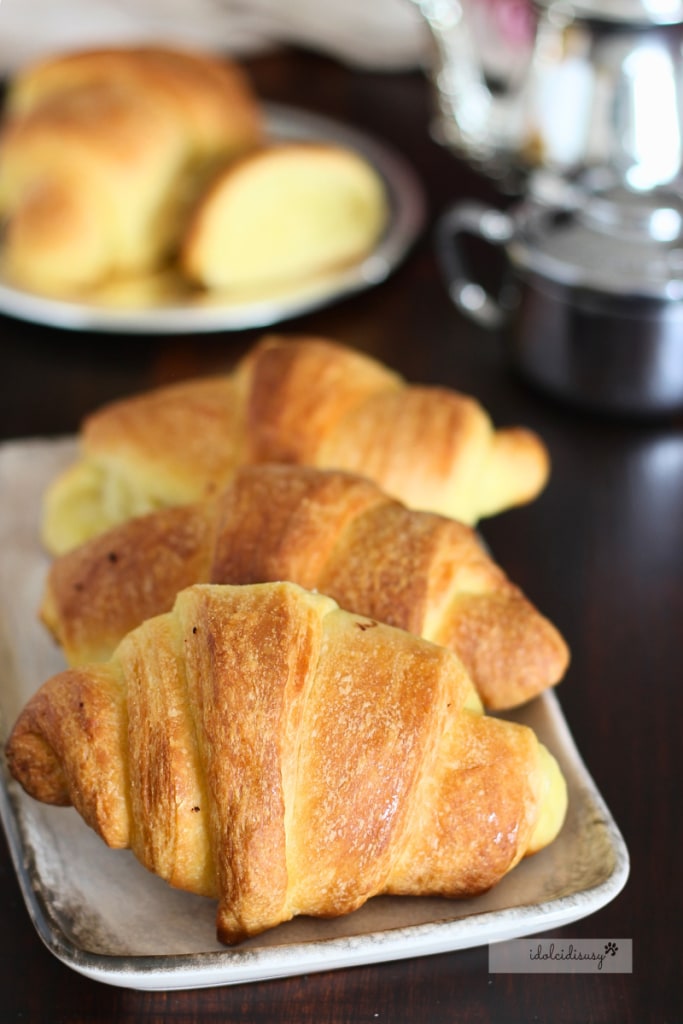
- Difficulty: Difficult
- Cost: Very Cheap
- Rest time: 6 Hours
- Preparation time: 1 Hour
- Portions: 20
- Cooking methods: Oven, Electric Oven
- Cuisine: Austrian
- Energy 219.45 (Kcal)
- Carbohydrates 20.77 (g) of which sugars 3.84 (g)
- Proteins 4.39 (g)
- Fat 13.20 (g) of which saturated 8.33 (g)of which unsaturated 4.61 (g)
- Fibers 0.78 (g)
- Sodium 199.13 (mg)
Indicative values for a portion of 58 g processed in an automated way starting from the nutritional information available on the CREA* and FoodData Central** databases. It is not food and / or nutritional advice.
* CREATES Food and Nutrition Research Center: https://www.crea.gov.it/alimenti-e-nutrizione https://www.alimentinutrizione.it ** U.S. Department of Agriculture, Agricultural Research Service. FoodData Central, 2019. https://fdc.nal.usda.gov
Croissant Ingredients
- 4 cups Manitoba flour
- 1 cup water
- 1/4 cup butter
- 2.5 tsp fresh brewer's yeast
- 1/4 cup sugar
- 1/4 cup milk
- 2 tsp salt
- 1 cup butter
- 1 egg (Beaten)
- 1.5 tbsp milk
Tools
Tools
- Mixer (I used a Kenwood)
Prepare the Croissants
Start by dissolving the brewer’s yeast in lukewarm water.
In the meantime, put the flour, sugar, and grated orange zest into the mixer, equipped with a hook (recommended for compact and elastic doughs).
Then, start the mixer at very low speed and add the dissolved yeast, followed by pouring the milk little by little. Finally, gradually add the softened butter cut into pieces.
Begin kneading, increasing the speed for about five minutes; the dough should be smooth and elastic. Only at the end do I add the salt and transfer everything onto a lightly floured work surface and give it a brief knead.
Then place the obtained dough in a bowl, cover with plastic wrap, and let it rise in a warm environment (77°-79°F) for two/three hours.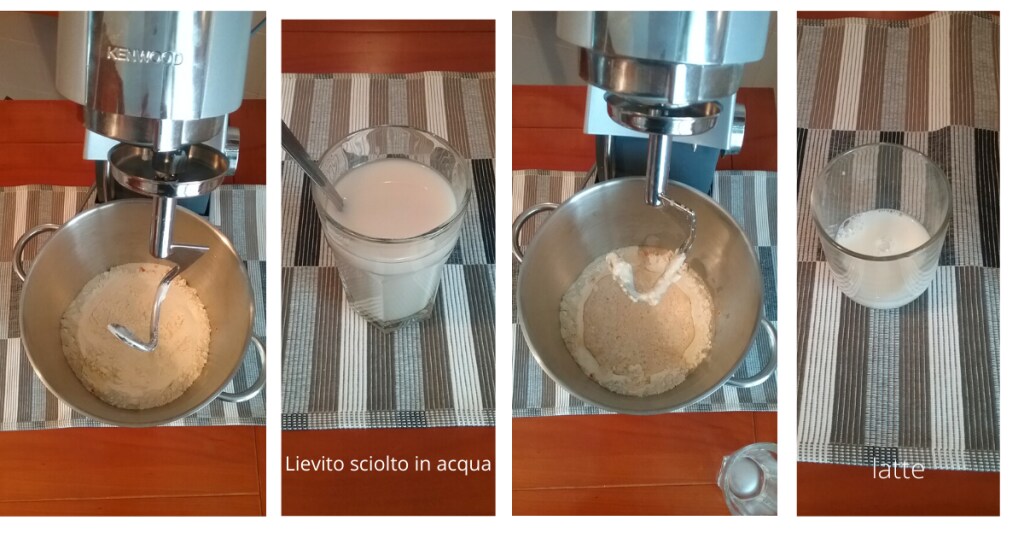
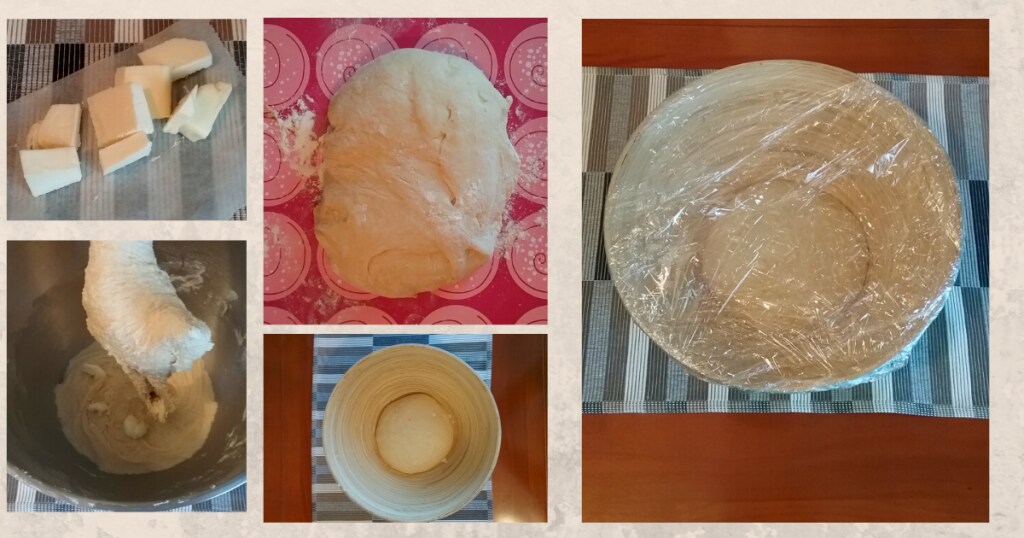
Prepare the “butter package”. Take the butter out of the fridge at least 10 minutes before use. Place it between two sheets of parchment paper.
Meanwhile, roll out the dough on the work surface with a rolling pin, giving it the shape of a rectangle. Flatten the butter with the rolling pin; it should also be in the shape of a rectangle but smaller than the dough sheet.
Position the butter package in the center of the dough, fold the two sides of the dough over (be careful: they should meet, not overlap) and stretch the dough vertically. This ensures the butter is evenly distributed inside.
Now start the folds.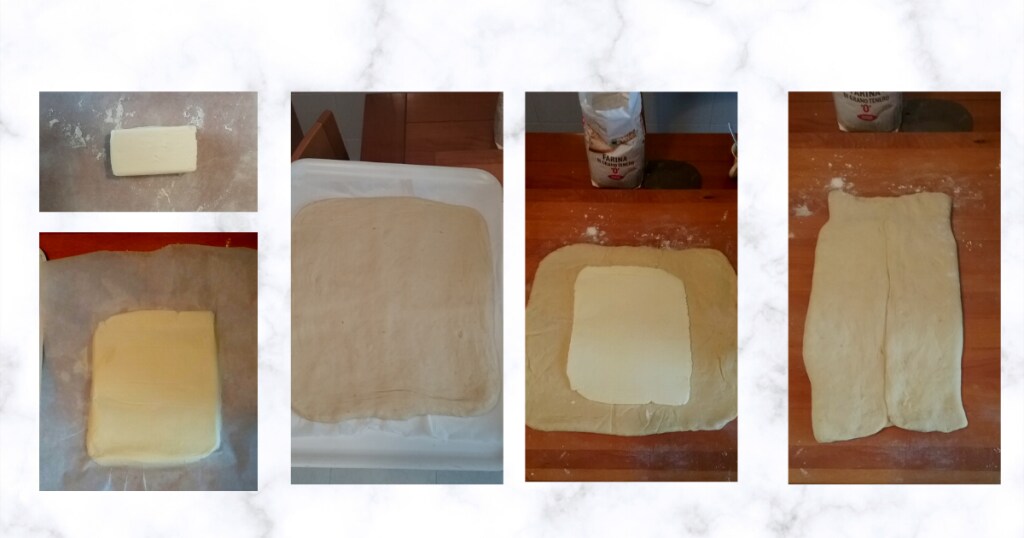
Fold the bottom part of the dough towards the center and overlap the third part on top of it, creating three layers. Then turn the dough 90°.
Continue with 2 more folds of 3 layers, then cover with plastic wrap and let rest in the fridge for an hour.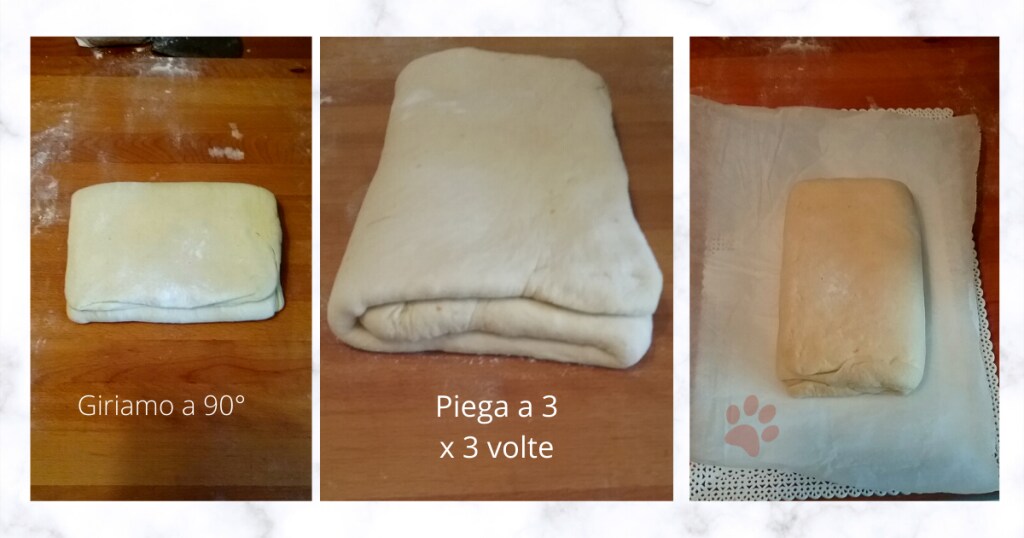
Remove the dough from the fridge and roll it out to a thickness of about 0.25 inch.
With a smooth wheel, cut triangles, stretch them a little, make an incision at the base, and start rolling them up.
Then brush the surface with beaten egg yolk and milk and let them rise for about two hours.
Finally, bake in a fan oven at 375°-390°F for 20 minutes without ever opening the door.
Fantastic and very fragrant.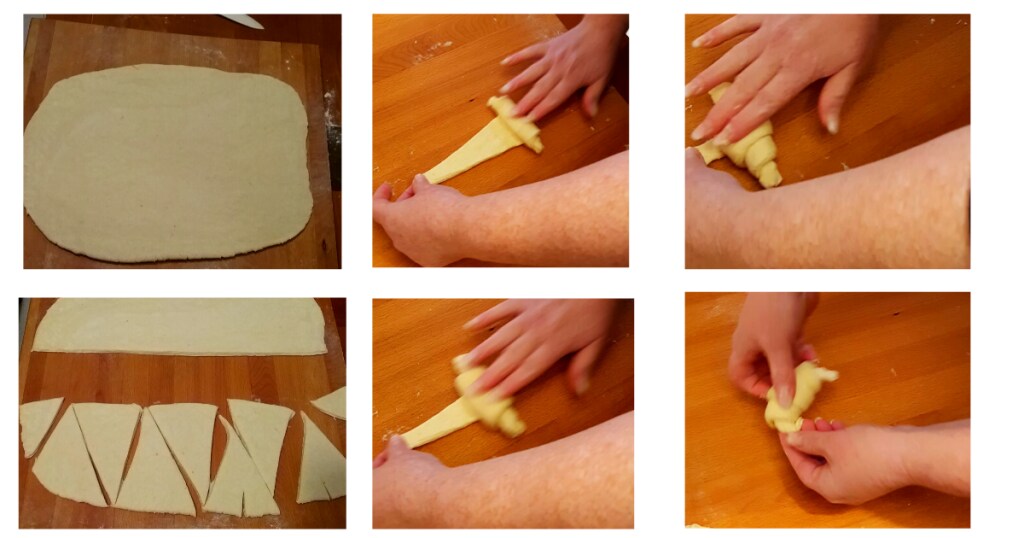

Susy’s Tip
This technique of three 3-folds is the most commonly used, because with this system we achieve regular layering: the classic 27 layers. However, it’s also possible to make one 3-fold and one 4-fold, but the layering will only be 12 layers.
If we want to fill them with jam or chocolate, we need to place a teaspoon of the filling we want to use in the center of each triangle. Then, fold them over, seal the ends by folding them towards the center, to prevent the filling from leaking out. And then bake them in the oven.
If you liked this recipe, you will surely also like the custard cream-filled doughnuts!

